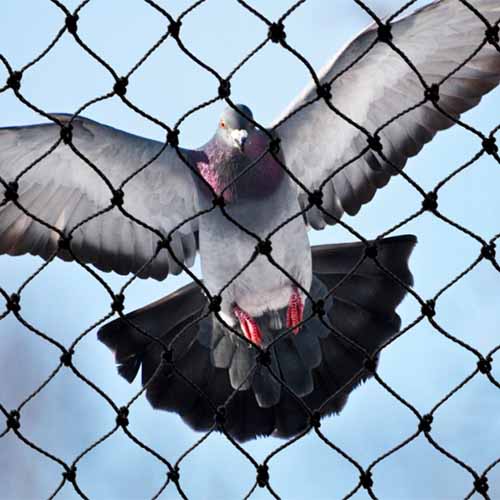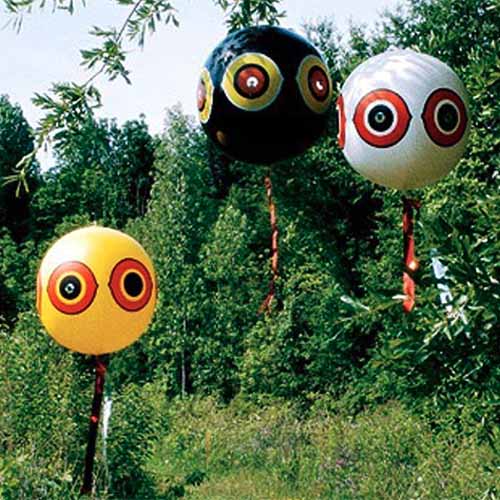Starlings arrive in large flocks, and will eat the fruit whole and puncture berries with their claws.


American robins (Turdus migratorius), those lovely spring singers, will come individually or in small groups to snack on blueberries in between worm courses.
House finches and red-winged blackbirds are also occasional blueberry pests.


Seed-eating types like finches may not target blueberries specifically, but they are attracted to areas where weeds and grasses are allowed to go to seed.
If these areas are near a blueberry patch, the temptation to try some for dessert is irresistible.
Physical Barriers
Netting is one of the best foolproof options, and it is commonly used by small and medium sized u-pick and other berry-growing farm operations.


It will create a physical barrier between your ripening berries and the birds.
Use three-quarter-inch mesh, which is small enough that all types will be excluded. Keep the netting eight to 12 inches off the ground so snakes don’t get tangled in the mesh. Use stakes or poles to prop the netting over the plants.


Birds will land on and peck through the mesh if you simply drape it over the bushes, and if the netting is too close to the plants, they’ll learn to push against it to access those juicy treats.


Heavy Duty Protective Netting
Netting is available at Home Depot in a variety of sizes.
You can also find netting options on Amazon, such as this 14-by-100-foot section of 3/4-inch mesh.
Visual and Auditory Options
Visual protection options available to you include shiny tape, terror eye balloons, and special hawk-shaped kites. Auditory tactics, such as loud noises, distress calls, and predator calls, are also available.
The idea here is to scare the birds enough to keep them away from your blueberries.
Wind pieces of tape with a shiny coating around plant stems so they can flutter in the breeze.


Irri-Tape Repellent Ribbon
Rolls of Irri-Tape Repellent Ribbon are available from Home Depot.
Set out a few owl statues and move them every day, or every other day.
Bird kites from Jackite, Inc. are hawk-shaped kites that you can buy specially to protect fruit.


Peregrine Falcon Jackite
You can find a peregrine falcon Jackite available on Amazon.
Large inflatable balloons with reflective eyes and markings, also known as terror eye balloons, can intimidate birds enough to keep them away.


Scare Eyes Inflatable Balloons
You can pick up a few brightly colored Scare Eyes from Home Depot or from the Bird B Gone Store via Amazon.
Species-specific distress calls, special predatory attack calls, and Bird Bangers are also commercially available.
The biggest issue with auditory options is they can become very annoying – to you, as well as your neighbors. Check local regulations before buying and using loud deterrents.


Be aware that devices claiming to deter avian visitors via ultrasonic methods are not effective.

